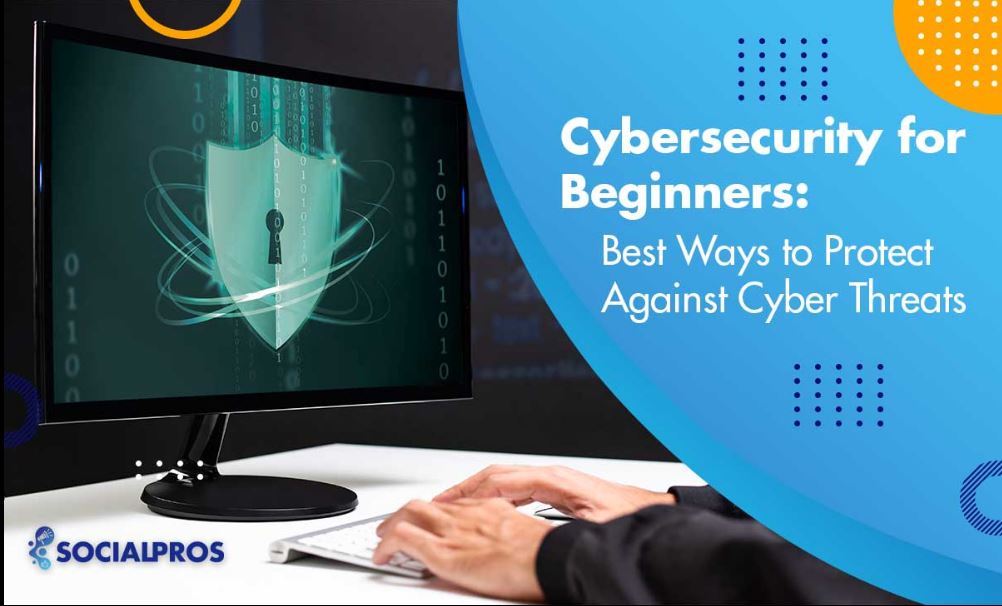Page Contents
In the modern world, the problem of ensuring cybersecurity is very relevant, because there are many threats on the Internet both to devices and to the users themselves. Learn more about the basics of cybersecurity and take effective steps to protect yourself online.
The Basics Of CyberSecurity in 2022
The world today trusts technology more than ever before. As a result, the creation of digital data has increased dramatically. Today, businesses and governments store much of this data on computers and transmit it over a network to other computers. Devices and their underlying systems have vulnerabilities that undermine the organization’s goals when operated.
Data breaches often have a negative impact on any business. This can destroy the company’s reputation through the loss of consumer and partner confidence. The loss of important data, such as source files or intellectual property, can cost a company its competitive advantage. Moreover, data breaches can impact corporate revenues due to non-compliance with data protection regulations. Thus, organizations should adopt and implement a rigorous approach to cybersecurity.
Cybersecurity notes are important not only in business. They matter in every field today. For example, professional app developers, who can be contacted by following the link https://jatapp.com/services/dedicated-development-team/, mention that cybersecurity is very important for mobile app users. Any application is a source of a huge amount of users’ personal data, which can be exposed to various threats in the global network. Therefore, users should know how to ensure a safe online experience.
Read below about the cyber security basics and learn about effective ways to protect yourself online.
Introduction to Cyber Security
Cybersecurity is the common practice of protecting devices, systems, and data from various types of malicious attacks. The “cybersecurity” term is used in various contexts today and can be conditionally divided into several general cyber security concepts:
- Network security is the effective practice of protecting a computer network from attackers. This can be both situationally determined malware and targeted intruders;
- Application basic cyber security ensures protection for software and devices against various threats. A mobile application must protect user data, but when it is at risk, it can provide free access to confidential information. Ensuring the mobile app security usually begins at the development stage, that is, long before the actual use of the program;
- Information security ensures reliable storage and transmission of data;
- Operational security is based on processes and solutions to protect information assets;
- Uninterrupted operation and disaster recovery determine how a company takes action to resolve a cybersecurity incident that results in the loss of data or operations;
- The end-user education is about the most unpredictable but important factor in cybersecurity – people. Poorly observing security rules, a person can introduce a virus into the system. Thus, it is vital today to educate users to remove suspicious email attachments, not connect unrecognized USB drives, etc.
Key Cybersecurity Threats
Cyber threat is a destabilizing factor that negatively affects the object of information security by using the technological capabilities of cyberspace. It aims to violate the confidentiality, integrity, authorship, observability, and availability of information. Read about the main threats to cybersecurity in the paragraphs below.
Malware
Malware is dangerous software that hackers intentionally install on your computer. Such programs often infiltrate the device as harmless email attachments or by pressing a fake button on websites, which allows them to bypass network security systems. Therefore, it is recommended to download only those files that you are sure are safe.
Ransomware
This type of malware encrypts the user’s important files. As a result, a ransom is required to regain control over them. However, most often this does not lead to the desired effect and the user fails to solve the problem.
Phishing
This is a type of fraud in which the offender pretends to be a reliable counterparty. A phishing attack can look like an email, a phone call, or a social media message. You receive a message, often purporting to be from your bank, asking you to confirm your details, provide a credit card number, or make a money transfer. This data is then used to gain unauthorized access to your accounts.
DDoS Attacks
A DDoS attack means that your network or server cannot handle the intensity of Internet traffic. A large amount of traffic exceeds the network bandwidth and you cannot use it for its intended purpose. Most often, this type of attack targets company websites.
Attack of Intermediaries
With this type of attack, the intruder relays messages between you and the other side, pretending to be you or someone you are communicating with.
5 Effective Ways to Protect Against Cyber Attacks
Several effective cyber security knowledge measures will help you detect any suspicious activity and prevent it:
1- Encryption
This is an excellent way to ensure cybersecurity, provided it is used correctly. The program using encryption will take your messages and turn them into a code that will prevent scammers from reading the original information;
2. Authentication
This allows making sure that you are the owner of the account, so attackers cannot get access to it. Usually, only a password is required for verification. But many services now insist on two-factor authentication, which is even more secure;
3- VPN
This technology is used for various purposes, for example, to provide remote access. But at the same time, it perfectly protects against cyberattacks. VPN services hide the user’s IP address, as a result of which fraudsters cannot find his location or network;
4- Antivirus and firewalls
These are the simplest protections that each user can install to protect the device from all kinds of risks. Firewall protection and antiviruses detect cyber threats in a timely manner and immediately delete them or move them to a special folder;
5- SIEM
This is a real-time protection tool. SIEM solutions are available as software or services.
Conclusion
The cyber security guide above shows that some measures can greatly protect systems. Cybersecurity is based on cryptographic protocols for encrypting files, emails, and other sensitive information. This reliably protects data from loss. Moreover, unique security software regularly scans users’ devices to reveal malicious code snippets and remove them. Digital security protocols also aim to detect malware in real-time. So, take advantage of the latest technological advances and keep your device running smoothly.






